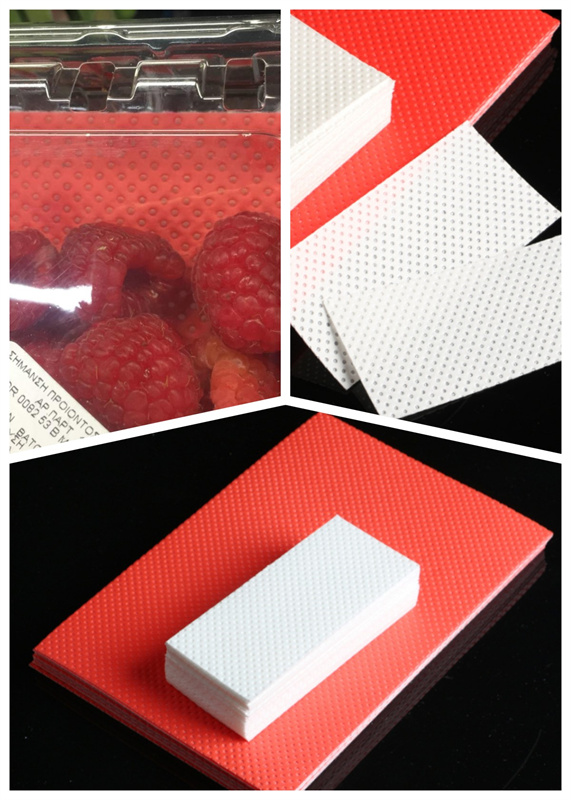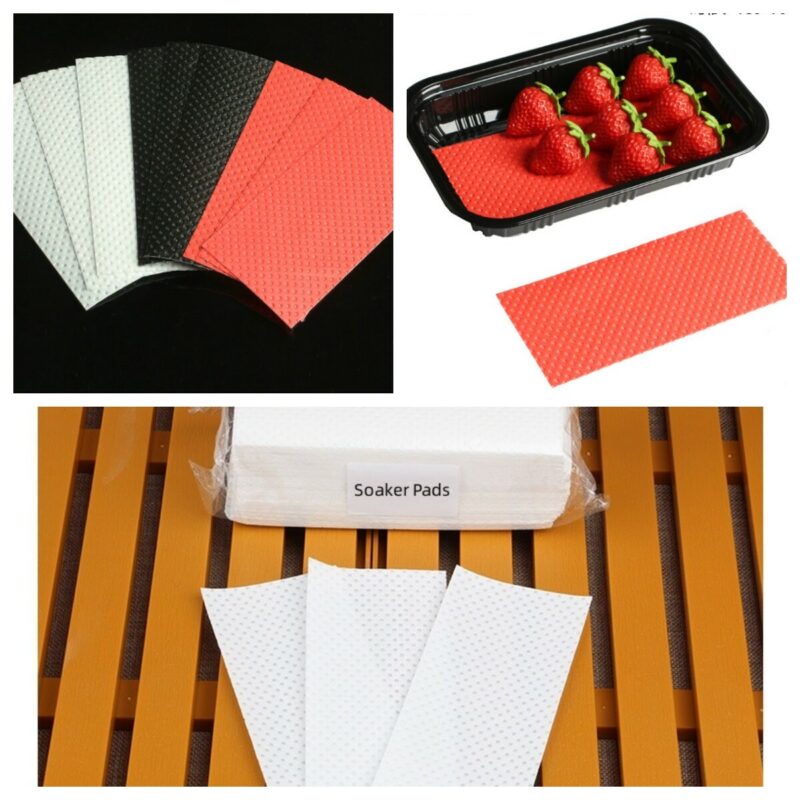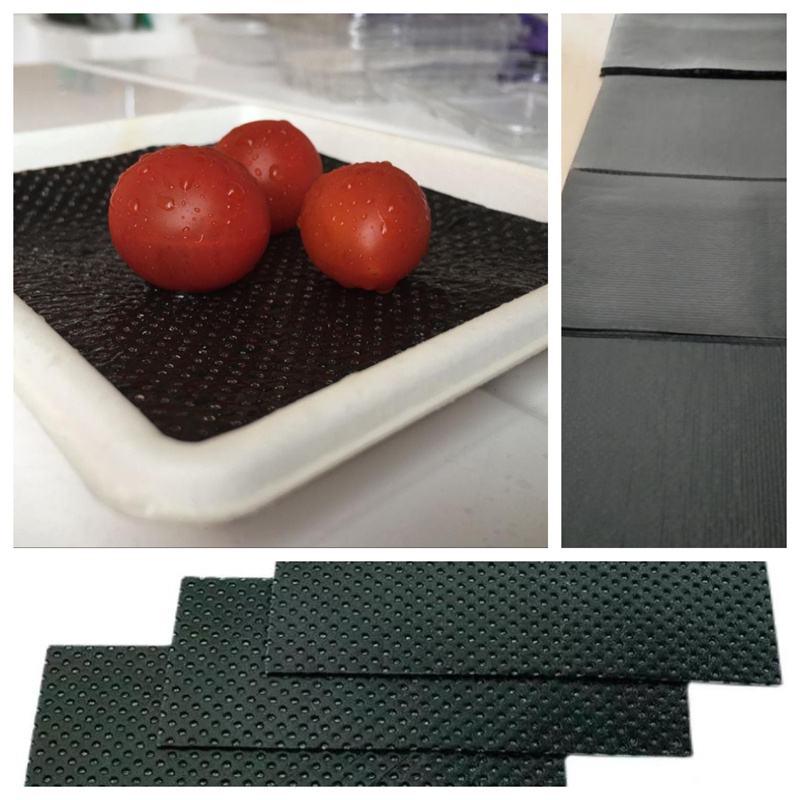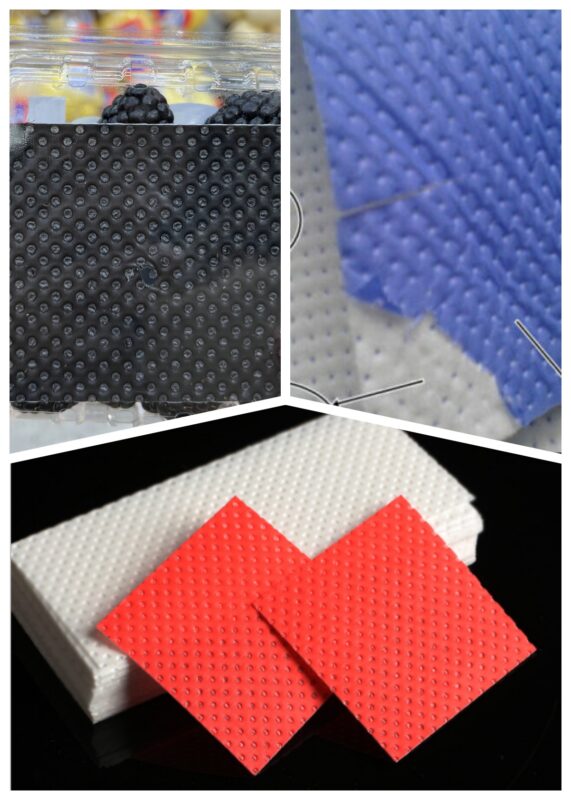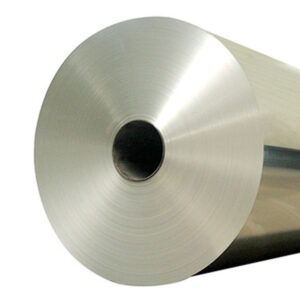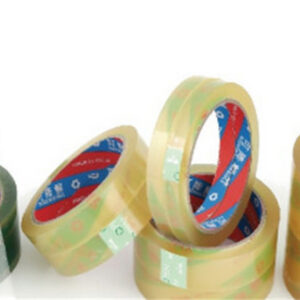I. Overview of Absorbent Fruit Pad
The freshness absorbent fruit pad is a hygiene product used for preserving fresh products. Its primary function is to absorb excess moisture from the fruits, preventing spoilage and contamination. The materials of the fruit pad typically consist of polyethylene (PE) and lint-free paper, making it a disposable item. Due to variations in fresh products and storage environments, absorbent fruit pads can be customized in different sizes according to user requirements to meet diverse practical needs.
II. Combination of Polyethylene and Lint-Free Paper
1. Polyethylene (PE)
Polyethylene is a thermoplastic material formed by polymerizing ethylene. It boasts attributes like lightweight, durability, non-toxicity, and waterproofing. In the context of freshness absorbent pads, polyethylene primarily acts as a waterproofing agent, effectively preventing water from seeping into the fresh fruits. Furthermore, polyethylene exhibits good oxygen permeability, promoting the respiration of fresh products and aiding in maintaining their freshness.
However, it’s worth noting that polyethylene can degrade in high-temperature, high-pressure, acidic, or alkaline environments, resulting in the generation of harmful substances. Therefore, when using polyethylene freshness absorbent fruit pads, prolonged exposure to extreme conditions like high temperatures and pressures should be avoided.
2. Lint-Free Paper
Lint-free paper is a specialized paper with high water-absorption properties, composed of wood pulp and other additives. Within freshness absorbent pads, lint-free paper primarily serves to absorb moisture, rapidly soaking up excess water from fresh products. Additionally, lint-free paper possesses characteristics such as dust-proofing, moisture resistance, and antistatic properties, effectively shielding fresh products from external contaminants.
Similar to polyethylene, lint-free paper also has certain limitations. For instance, its water-absorption capacity is finite, and when fresh products contain excessive moisture, incomplete absorption might occur. Moreover, lint-free paper is susceptible to mold growth in humid conditions, which could affect its water-absorption performance. Consequently, when using lint-free paper freshness absorbent pads, it’s essential to maintain a dry environment and prevent prolonged exposure to humidity.
To summarize, polyethylene and lint-free paper each plays crucial roles in freshness absorbent pads. Polyethylene’s waterproofing and oxygen permeability contribute to maintaining freshness, while lint-free paper’s high water-absorption capacity effectively removes excess moisture from fresh fruits. The harmonious combination of these materials provides robust preservation for fresh products.
III. Advantages and Application Scenarios of Freshness Absorbent Fruit Pads
Advantages
As a hygiene product, freshness absorbent pads offer the following advantages:
Strong Absorption: Swiftly absorbs excess moisture from fresh fruits, preserving their freshness.
Dust and Moisture Protection: Effectively guards fresh products against external dust and humidity.
Good Breathability: Polyethylene’s oxygen permeability supports the respiration of fresh products.
Disposable Usage: Convenient to use, can be discarded after use, reducing cleaning and cross-contamination risks.
Customization: Different sizes of absorbent fruit pads can be tailored to meet various storage requirements.
Application Scenarios Freshness absorbent fruit pads find utility in the following scenarios:
Supermarkets, Farmer’s Markets: Preserving fresh products like meat, seafood, and vegetables.
Logistics and Transport: Ensuring product quality during the transportation of fresh goods.
Catering Industry: Preserving fresh products in restaurants, hotels, etc.
Household Use: Keeping fresh products in household refrigerators.
IV. Market Prospects and Challenges
With increasing emphasis on food quality and safety, freshness absorbent pads have promising market prospects. However, in a competitive market environment, they also face challenges:
Product Innovation: Continuously developing novel, efficient freshness absorbent pads to meet evolving market demands.
Cost Reduction: Enhancing production processes and lowering raw material costs to enhance market competitiveness.
Environmental Awareness: Prioritizing environmental considerations during production to minimize pollution. Additionally, promoting the use of biodegradable materials to reduce plastic pollution.
User Experience: Improving product quality and after-sales services to elevate user satisfaction and loyalty.
V. Conclusion
Absorbent fruit pads serve as essential hygiene products, efficiently absorbing excess moisture from fresh products to maintain their freshness and prevent contamination. Comprising materials like polyethylene and lint-free paper, they exhibit characteristics such as waterproofing, water absorption, breathability, and dust protection. Customizable in various sizes as per user needs, these pads find extensive applications in supermarkets, farmer’s markets, logistics, and households.
While the market prospects for freshness absorbent fruit pad is promising, they must address challenges in a competitive landscape. Enterprises need to innovate constantly, prioritize environmental consciousness, and enhance user experiences to adapt to a dynamically changing market. For instance, the development of absorbent fruit pads with superior water-absorption capabilities and breathability can enhance product performance.
Reducing Costs: By optimizing production processes and raw material costs, product competitiveness can be enhanced. For example, seeking cost-effective raw material suppliers and improving production efficiency to lower manufacturing costs.
Environmental Awareness: Focusing on environmental considerations during production to minimize environmental impact. For example, utilizing eco-friendly materials and promoting the use of biodegradable materials to reduce plastic pollution. At the same time, raising awareness of the importance of environmental protection among customers.
User Experience: Elevating product quality and post-sales services to increase customer satisfaction and loyalty. For instance, providing exceptional after-sales support and customer experiences to build a strong brand image and enhance user satisfaction.
In conclusion, freshness absorbent pads serve a vital role as hygiene products in the food industry. While their market prospects are promising, enterprises must continuously innovate, prioritize environmental considerations, and enhance user experiences to meet market challenges and achieve sustainable development.

